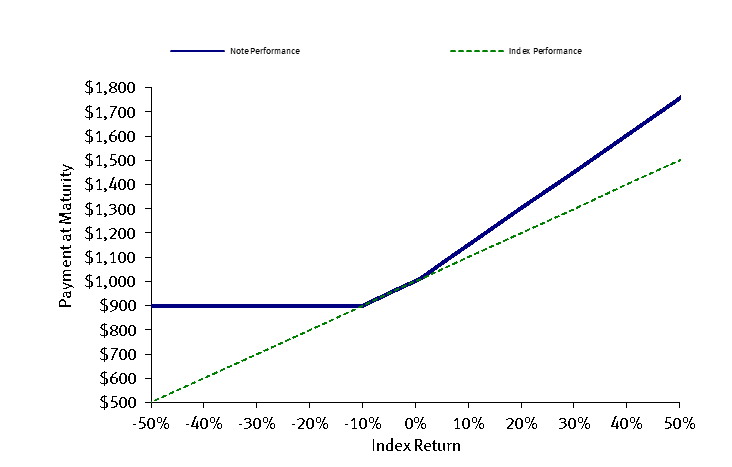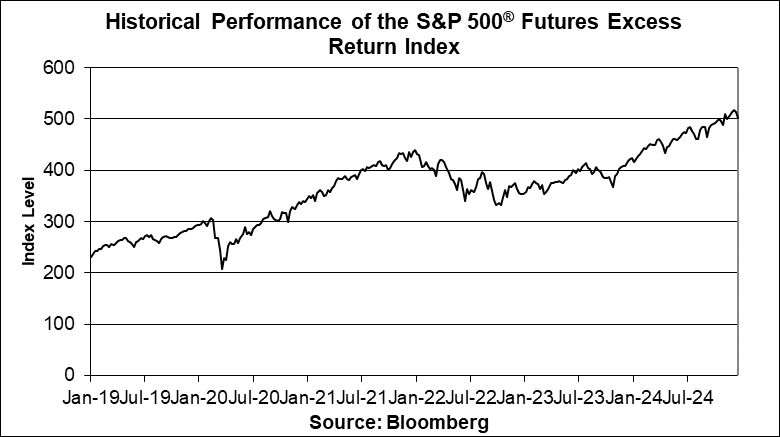included in the original issue price of the notes. These costs include the selling commissions, the projected profits, if any, that our affiliates expect to realize for assuming risks inherent in hedging our obligations under the notes and the estimated cost of hedging our obligations under the notes. See “The Estimated Value of the Notes” in this pricing supplement.
●THE ESTIMATED VALUE OF THE NOTES DOES NOT REPRESENT FUTURE VALUES OF THE NOTES AND MAY DIFFER FROM OTHERS’ ESTIMATES —
See “The Estimated Value of the Notes” in this pricing supplement.
●THE ESTIMATED VALUE OF THE NOTES IS DERIVED BY REFERENCE TO AN INTERNAL FUNDING RATE —
The internal funding rate used in the determination of the estimated value of the notes may differ from the market-implied funding rate for vanilla fixed income instruments of a similar maturity issued by JPMorgan Chase & Co. or its affiliates. Any difference may be based on, among other things, our and our affiliates’ view of the funding value of the notes as well as the higher issuance, operational and ongoing liability management costs of the notes in comparison to those costs for the conventional fixed income instruments of JPMorgan Chase & Co. This internal funding rate is based on certain market inputs and assumptions, which may prove to be incorrect, and is intended to approximate the prevailing market replacement funding rate for the notes. The use of an internal funding rate and any potential changes to that rate may have an adverse effect on the terms of the notes and any secondary market prices of the notes. See “The Estimated Value of the Notes” in this pricing supplement.
●THE VALUE OF THE NOTES AS PUBLISHED BY JPMS (AND WHICH MAY BE REFLECTED ON CUSTOMER ACCOUNT STATEMENTS) MAY BE HIGHER THAN THE THEN-CURRENT ESTIMATED VALUE OF THE NOTES FOR A LIMITED TIME PERIOD —
We generally expect that some of the costs included in the original issue price of the notes will be partially paid back to you in connection with any repurchases of your notes by JPMS in an amount that will decline to zero over an initial predetermined period. See “Secondary Market Prices of the Notes” in this pricing supplement for additional information relating to this initial period. Accordingly, the estimated value of your notes during this initial period may be lower than the value of the notes as published by JPMS (and which may be shown on your customer account statements).
●SECONDARY MARKET PRICES OF THE NOTES WILL LIKELY BE LOWER THAN THE ORIGINAL ISSUE PRICE OF THE NOTES —
Any secondary market prices of the notes will likely be lower than the original issue price of the notes because, among other things, secondary market prices take into account our internal secondary market funding rates for structured debt issuances and, also, because secondary market prices may exclude selling commissions, projected hedging profits, if any, and estimated hedging costs that are included in the original issue price of the notes. As a result, the price, if any, at which JPMS will be willing to buy the notes from you in secondary market transactions, if at all, is likely to be lower than the original issue price. Any sale by you prior to the Maturity Date could result in a substantial loss to you.
●SECONDARY MARKET PRICES OF THE NOTES WILL BE IMPACTED BY MANY ECONOMIC AND MARKET FACTORS —
The secondary market price of the notes during their term will be impacted by a number of economic and market factors, which may either offset or magnify each other, aside from the selling commissions, projected hedging profits, if any, estimated hedging costs and the level of the Index. Additionally, independent pricing vendors and/or third party broker-dealers may publish a price for the notes, which may also be reflected on customer account statements. This price may be different (higher or lower) than the price of the notes, if any, at which JPMS may be willing to purchase your notes in the secondary market. See “Risk Factors — Risks Relating to the Estimated Value and Secondary Market Prices of the Notes — Secondary market prices of the notes will be impacted by many economic and market factors” in the accompanying product supplement.
Risks Relating to the Index
●JPMORGAN CHASE & CO. IS CURRENTLY ONE OF THE COMPANIES THAT MAKE UP THE S&P 500® INDEX, THE INDEX UNDERLYING THE UNDERLYING FUTURES CONTRACTS OF THE INDEX,
but JPMorgan Chase & Co. will not have any obligation to consider your interests in taking any corporate action that might affect the level of the Index.
●THE INDEX IS SUBJECT TO SIGNIFICANT RISKS ASSOCIATED WITH THE UNDERLYING FUTURES CONTRACTS —
The Index tracks the excess return of the Underlying Futures Contracts. The price of an Underlying Futures Contract depends not only on the level of the underlying index referenced by the Underlying Futures Contract, but also on a range of other factors, including but not limited to the performance and volatility of the U.S. stock market, corporate earnings reports, geopolitical events, governmental and regulatory policies and the policies of the Chicago Mercantile Exchange (the “Exchange”) on which the



